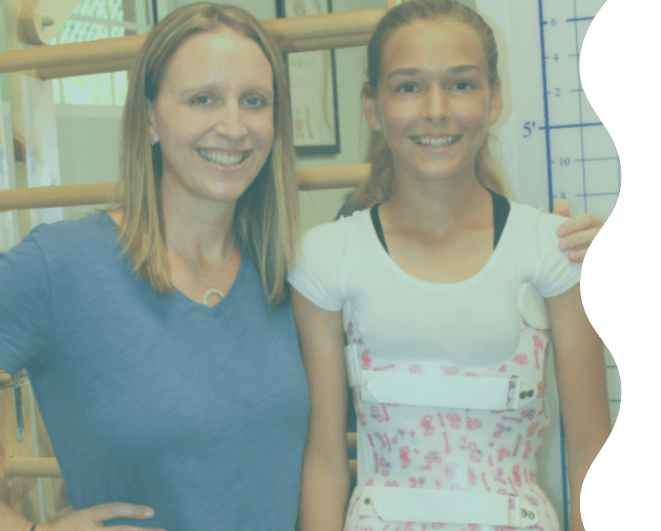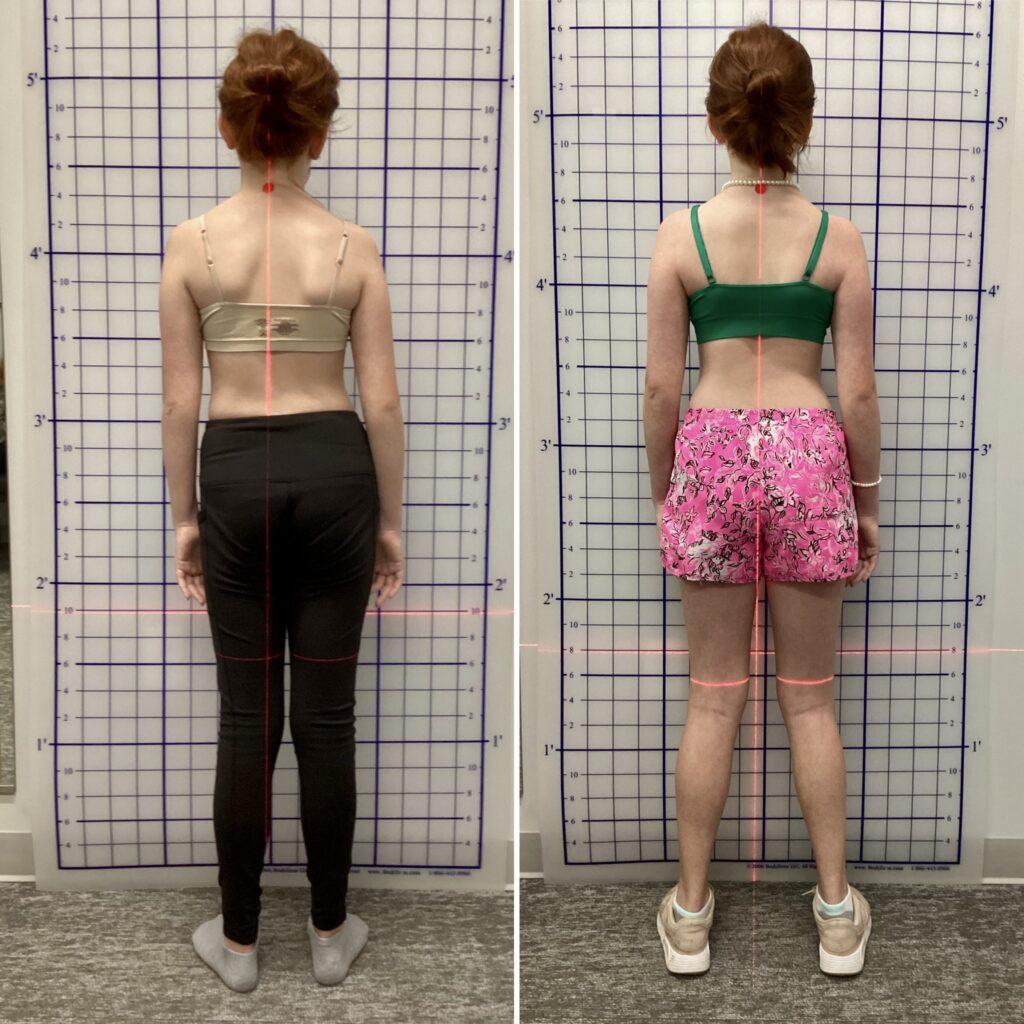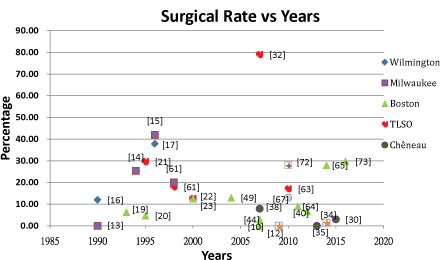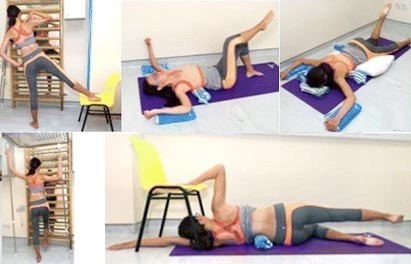SCHROTH SCOLIOSIS PROGRAM
Scoliosis is an abnormal curvature of the spine that affects two to three percent of the population or an estimated 7 million people in the United States.
Most are diagnosed with scoliosis between the ages of 10 and 15, but the condition also affects infants and adults.
It is a condition that affects people of all races, classes, and genders. Girls are eight times more likely than boys to have a curve that will progress to a magnitude that requires treatment. Scoliosis is common in children with a variety of congenital and neuromuscular diseases, but it is most prevalent in seemingly healthy children, with no known cause (idiopathic).
Scoliosis, when left untreated, can get worse and may cause chronic back pain, impact
heart and lung function, and take a toll on self-esteem. Screening for the condition is non-invasive and takes about 30 seconds. With early detection and proper treatment, people diagnosed with scoliosis can lead healthy, active lives.


Reese’s
Scoliosis Journey
Ubylee Pain & Injury Treatment Center offers a growing line of medical services at our multi-specialty facility located in Matthews, North Carolina.
Schroth Based scoliosis treatment
For reasons unknown, the vertebra of the spine begins to bend sideways and rotate causing a “C” or “S” shape. Muscle imbalance occurs resulting in areas of increased stress and sometimes pain which can cause difficulty breathing. Early detection and treatment are key.
The Schroth Method is a non-invasive Physical Therapy treatment that focuses on elongating and derotating the scoliotic or kyphotic spine, in an effort to stop/slow curve progression and prevent further spinal deformity.
Using a combination of hands-on treatment, passive corrections of spinal positioning in all three planes (frontal, sagittal and transverse), and active breathing techniques, the Schroth-certified Physical Therapist will aim to improve patients’ posture, eliminate pain, and enhance lung capacity.
Managing scoliosis with the Schroth Method and bracing may be an option for patients who want to avoid surgery. However, a long-term commitment to the Schroth guidelines is necessary to make this treatment successful. the progression of your curve before it’s too late.
The Schroth method uses specific exercises based on an individual’s scoliosis curve pattern. This method is based on self-awareness principals. This means that patients have to develop a self-awareness of where their body is in space, how they hold their bodies now, and how they should actually be holding their bodies; physical therapy and the Schroth Method can help patients to learn this self-awareness.
The patient will receive education on their first visit about their curve type and their current posture/pattern that is affecting their activities of everyday living. The abnormal posture of the patient needs to be corrected from an imbalanced position.
The patient will learn their corrected posture by supervised practice moving their body through space and holding this reformed position. The physical therapist works with the patient to help develop this self-awareness in three dimensions, along with a new breathing pattern to further expand concave or collapsed areas.
With these exercises, we are correcting as much of the postural collapse as possible, in order to decrease the forces that may be contributing to the progression of the curve, pain, and limited lung function.
Instead of waiting and seeing if your curve progresses, try Schroth based scoliosis treatment to help stop the progression of your curve before it’s too late.
- Stop Curve Progression
- Eliminate Pain
- Improve posture and appearance
- Increase lung capacity
The Schroth Method focuses on spinal corrections in all three planes of motion, to derotate the spine in the same planes of motion as the deformity, as opposed to traditional treatment which focuses on only one plane of motion at a time. This more effectively addresses the deformity in an attempt to halt or slow progression. The Schroth Method is primarily intended for use in 1:1 individual physical therapy treatment of patients diagnosed with Adolescent Idiopathic Scoliosis (AIS).
- Patients should bring a copy of the most recent X-ray or have them sent over prior to initial evaluation.
- Wear clothes that can easily display the spine ie. bathing suit, non-racerback sports bar, cami.
- Patients should bring their brace, if applicable.
To allow for structural changes to be corrected, the exercises are usually initiated at a 10 degree Cobb angle and based on chance of progression. If there are any pain or issues present as a coexistent problem, therapy can begin on a case by case basis.
Scoliosis Psychology Program
As a child, being diagnosed with scoliosis may impact your mental health and emotional well-being. A diagnosis of scoliosis and its treatment can mean some tough challenges for a child including; adjusting to wearing a brace, committing to specialized exercises, and possibly surgery. Ubylee recognizes that having scoliosis means a patient may also struggle with social and emotional challenges.
Working with a mental health therapist can vastly improve:
- Anxiety and depression
- Poor self-esteem
- Negative thoughts
- Negative body image
- Social withdrawal and feeling “different” from peers
- Rejection, teasing and bullying by peers
- Fear associated with medical procedures
- Conflict with parents and caregivers about wearing a brace
Gabrielle Troutman, LCSW, is a mental health therapist in Matthews, NC helping children manage their mental health following a scoliosis diagnosis. She completed training on “Psychology for Scoliosis” with an emphasis on adolescents and compliance with treatment and brace wearing. Gabby has 10 years of experience working in healthcare, and 5 years in the mental health field. Gabby will work directly with Brittany to collaborate in your treatment plan to help you reach your goals.
Add Your Heading Text Her


Brittany at Ubylee Healthcare has changed my life. I was first diagnosed with scoliosis when I was 12 years old. I was told that surgery was my best option if I wanted to improve the curves in my spine. I definitely didn’t want to have surgery so my family looked into other options. While researching, we found that Schroth physical therapy combined with Rigo Cheneau bracing not only maintained but helped to improve most patients’ curves. Luckily we have one of the only Schroth physical therapists in the state right here in Charlotte at Ubylee. I’ve been going to Brittany for the past 3 years and have continued the Schroth exercises she’s taught me at home.
Over the course of my treatment, my three curves have collectively decreased by 19 degrees! My orthopedic doctor is certain that I won’t have to have surgery now. I have loved working with Brittany. She truly cares about me as a patient and a person and has even come to one of my soccer games to cheer me on. She has been a huge support and I’m forever grateful for Brittany and Ubylee Healthcare


